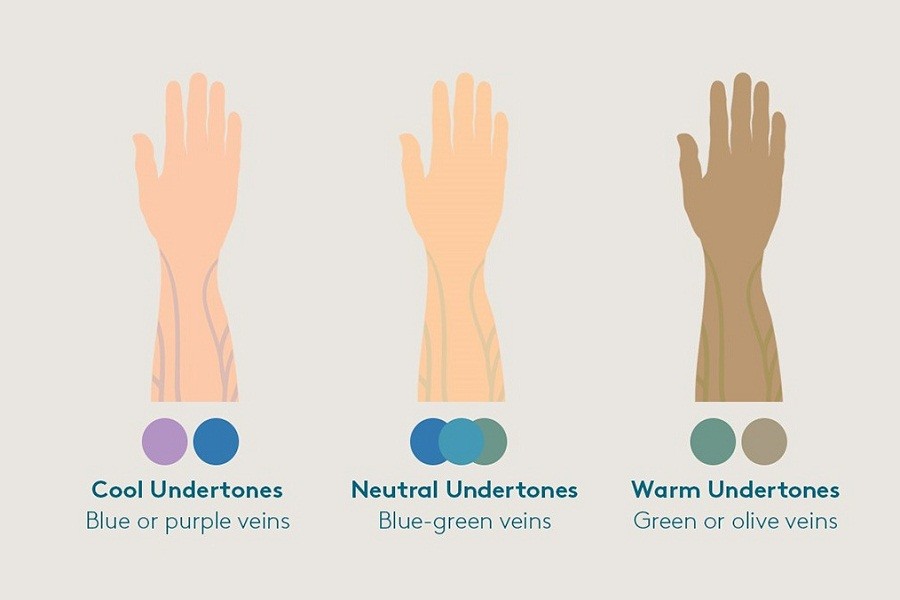Your skin tone may change a shade or two deeper in the summer or become lighter in the winter. But your undertone never changes.
Why is it necessary to know your undertone?
If you have ever struggled with finding your correct foundation shade, the process could be made easier just by knowing your undertone. It helps us to harmonise and balance skin tone with the appropriate foundation and concealer.
When trying to match the right shades, it is better to match from the centre of the face down to the middle of the neck, as this will give you the most accurate representation and allow you to see any redness you may want to cancel out.
The most crucial goal in matching your shade is to avoid the dreaded line of demarcation. It is the most common makeup mistake; we often apply mismatched foundations.
Neutral or cool undertones wearing yellow and yellow undertones wearing neutral or cool tones will show a line of demarcation, make the skin look ashy or grey, and possibly oxidise the formula, making the colour look even more unnatural.
Types of undertones
There are mainly three undertones - warm, cool, and neutral. Warm includes golden, yellow, or peachy undertones. Cool includes pink, red, or blueish undertones. You have a neutral undertone if you mix warm and cool undertones.
How to specify your undertone
There are a few tried-and-true tests to help you figure out your undertone.
Assess your skin’s reaction to the Sun: Sun exposure is very telling when identifying your skin undertone. If you burn easily, you are a cool undertone. If you tan easily, you are warm undertones. If you burn and then tan, you are likely a neutral undertone.
Throw on a white T-Shirt: Dress in a white t-shirt. In bright, natural light, hold the item up to your face. If your skin looks pink or rosy by comparison, you are cool-toned. If your face looks more yellow, your undertone is warm.
If you look better in off-white or creamy hues rather than stark white, that is another sign that you may be warm-toned. If you can wear both colours without feeling like you look washed out, you may have a neutral undertone.
Consider your other features: Eye and hair colour can have any skin undertone in it, but as a generalisation, deeper skin tones and deeper eye colour usually tend to have warmer undertones, while very fair skin and lighter eyes tend to have neutral or cool undertones.
Test on some jewellery: Comparing how gold versus silver jewellery looks against your skin can be a practical way to figure out your undertone. Gold jewellery tends to be more flattering on warmer skin tones, while silver is most complimentary on cool tones. You might have neutral undertones if you do not distinguish between gold and silver.
Check the colour of your veins: Checking the colour of your veins is a great way to determine your undertones in a pinch, but you should look at the veins in and around your face and neck to truly identify your undertone. You have cool undertones if you can see blue veins in your skin. You are warm if your veins appear green on the skin or olive colour.
Thus, by the above steps, you can accurately determine your undertone, which will help you use makeup products for a flawless makeup look.


